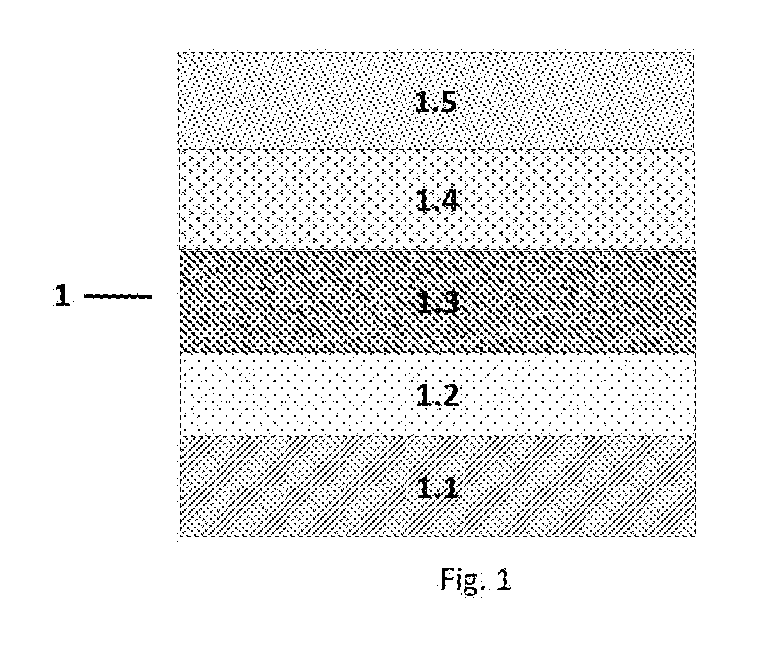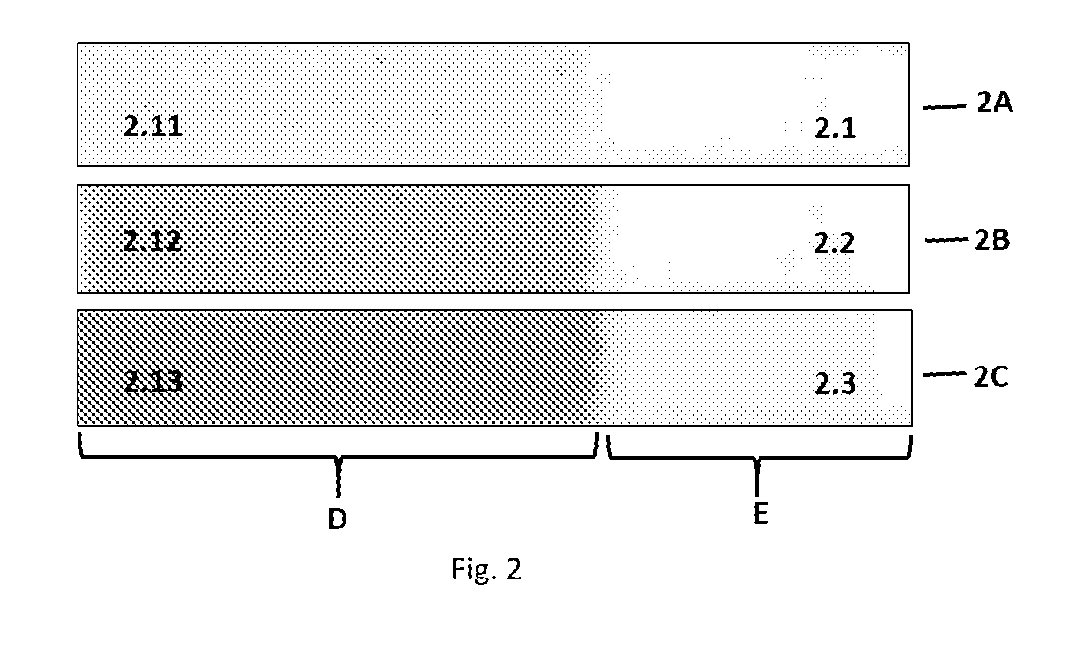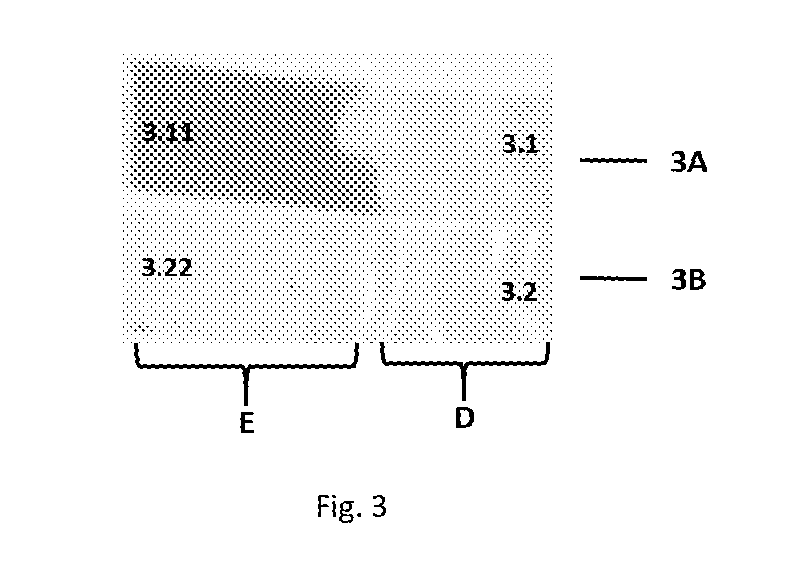A time-temperature indicator based on increased thermal reactivity of a diacetylene upon melt recrystallization
a diacetylene and thermal reactivity technology, applied in the field of time-temperature indicators, to achieve the effect of monitoring shelf li
- Summary
- Abstract
- Description
- Claims
- Application Information
AI Technical Summary
Benefits of technology
Problems solved by technology
Method used
Image
Examples
example 1
e with Induction Period
[0385]Diacetylene 1pTS (R—C≡C—C≡C—R, where R=CH2—O—SO2-p-tolyl) was synthesized according to procedure disclosed in U.S. Pat. No. 3,999,946. In a test tube, 0.5 g of 1pTS was dissolved in 5 g of 10% solutions of polyepichlorohydrin in toluene. The solution was heated near boiling and cooled rapidly to ˜5° C. After 15 minutes the resultant mixture, nearly white suspension was brought to room temperature. The suspension was coated on a polyester film using a four mil (100 microns) Bird type film applicator. A portion of the coatings was coated with a commercially available water based UV absorbing ink. The coating was placed in an oven and dried for 15 minutes by raising the temperature ˜60° C. The coating was translucent (slightly white). The coating thickness was about 1 mil (25 microns). A portion of the coating was melted by letting the non-coated side of the substrate touch a heated (about 130° C.) roller of a laminator. The coating melted almost instantly ...
example 2
dual Color Change)
[0390]Diacetylene 1mTU (R—C≡C—C≡C—R, where R=CH2—O—CO-m-tolyl) was synthesized according to general procedure disclosed in U.S. Pat. No. 4,276,190. In a test tube, 0.5 g of 1mTU was dissolved in 5 g of 10% solutions of polyepichlorohydrin in toluene. The solution was heated near boiling and cooled rapidly to ˜5° C. After 15 minutes the resultant mixture, nearly white suspension was brought to room temperature. The suspension was coated on a polyester film using a four mil (100 microns) Bird type film applicator. The coating was dried in an oven at about 50° C. for 15 minutes. The coating was translucent light beige color. A portion of the coatings was coated with a commercially available water based UV absorbing ink. The coating thickness was about 1 mil (25 microns). A portion of the coating was melted by letting the non-coated side of the substrate touch a hot (about 130° C.) roller of a laminator. The coating melted almost instantly and changed to almost transpa...
example 3
Binders
[0395]Inactive dispersions of a diacetylene, 2PmCl (R—C≡C—C≡C—R, where R=(CH2)2—O—CO—NH-m-chlorophenyl) was prepared in different polymeric binders such as polyvinyl acetate, polyisobutylmethacrylate, polystyrene, polyvinyl chloride, chlorinated rubber and polyvinyl butyral using the general procedure of Example 1. The dispersions were coated on polyester films to get ˜25 micron dry coatings. Narrow (˜1 cm) strips were cut from the coatings. A portion of the coatings of the strips was melted on heated (140° C.) roller of a laminator while the remaining portion was kept un-melted. The strips (with molten and un-molten portions) were annealed at 80° C. for different periods of time. The un-melted portion developed negligible color but the melt activated portions developed blue purple color with time and temperature as shown in FIG. 2.
[0396]Effect of UV absorber and UV light: A strip was coated with a commercially available UV absorber. One side of the UV coated and un-coated st...
PUM
| Property | Measurement | Unit |
|---|---|---|
| activation energy | aaaaa | aaaaa |
| melting point | aaaaa | aaaaa |
| weight percent | aaaaa | aaaaa |
Abstract
Description
Claims
Application Information
 Login to View More
Login to View More - R&D
- Intellectual Property
- Life Sciences
- Materials
- Tech Scout
- Unparalleled Data Quality
- Higher Quality Content
- 60% Fewer Hallucinations
Browse by: Latest US Patents, China's latest patents, Technical Efficacy Thesaurus, Application Domain, Technology Topic, Popular Technical Reports.
© 2025 PatSnap. All rights reserved.Legal|Privacy policy|Modern Slavery Act Transparency Statement|Sitemap|About US| Contact US: help@patsnap.com



